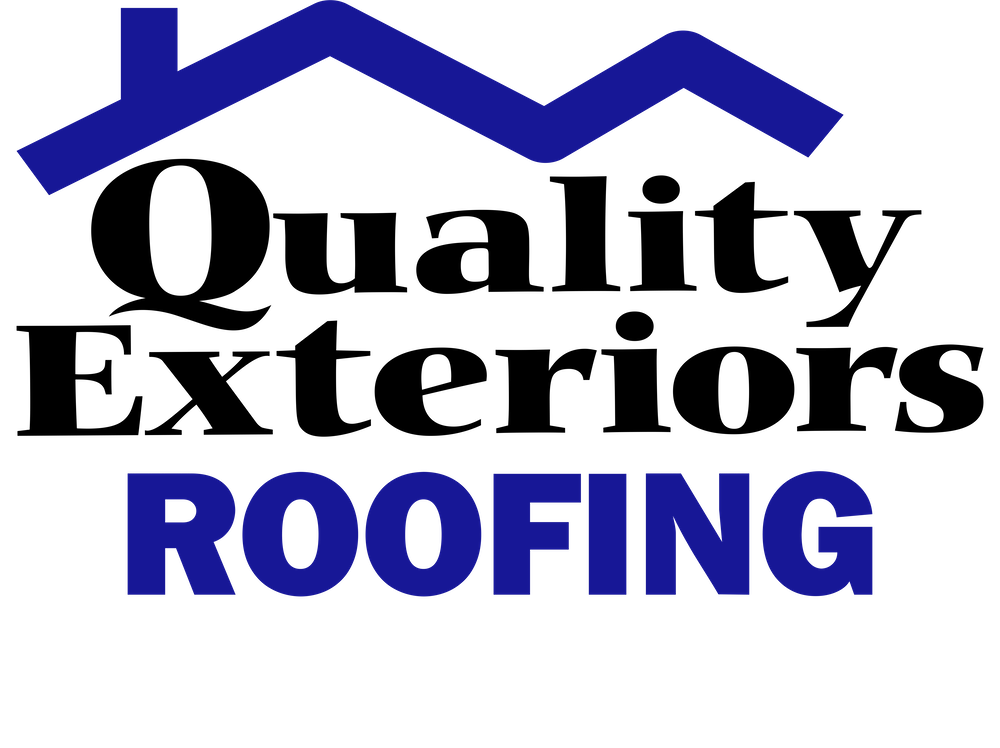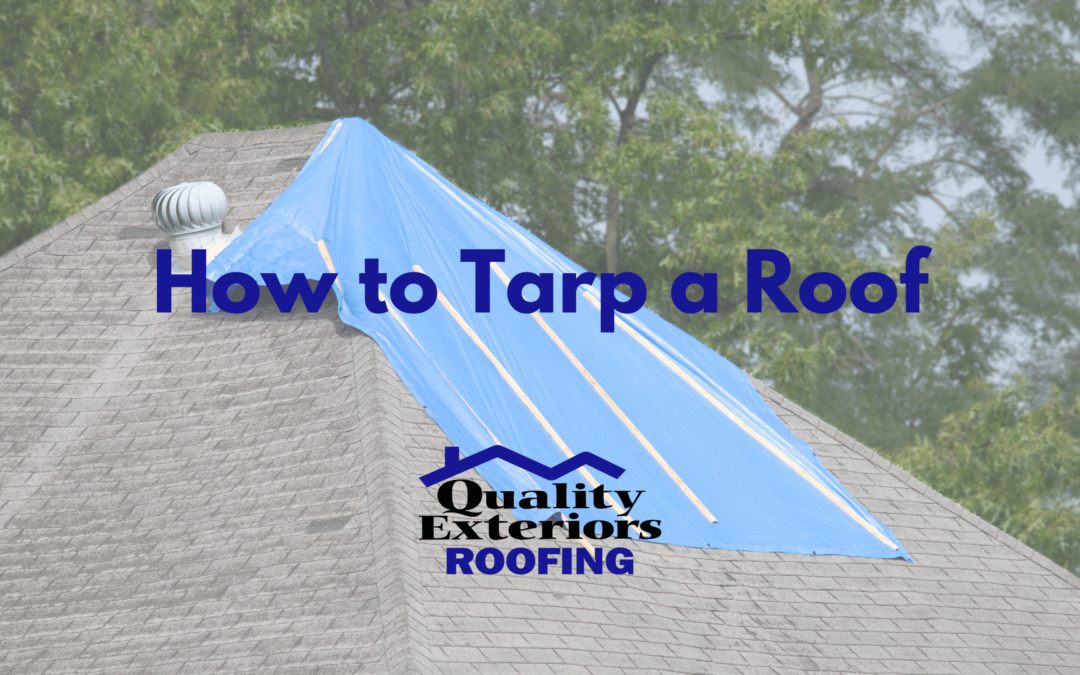When inclement weather hits your area, you first think about whether or not your roof was damaged. A damaged roof can cause water leaks and other issues that affect the inside as well as the outside of your home. While it’s best to leave it to the experts, sometimes, roofers are backed up due to severe damage to area homes. Knowing how to tarp a roof to prevent water damage and the need for additional repair work can save you hundreds, if not thousands, of dollars in the long run.
Damaged roofs are a safety hazard, and climbing up there in an attempt to tarp the roof without preparing can mean a trip to the emergency room. While it is important to understand how to tarp a roof, this really should be left to a roofing contractor, as they are better equipped to handle the dangers that damaged roofs can present. If you suspect roof damage and need roof repair work, don’t risk injuries.
Call the Shreveport-Bossier roofing experts at Quality Exteriors today at (318) 747-1254.
Why Is It Important to Tarp a Roof After Roof Damage?

Before we dive into how to tarp a roof after a storm, we’ll explain why keeping your roofing materials covered during a storm is important.
After your roof has sustained damage, it’s important to tarp it to cover the damaged area to prevent additional destruction before professional roofers can repair or perform the initial installation process.
A weakened roof is susceptible to more damage, so covering any existing holes or missing shingles is important. Roof tarping will protect the home’s interior from water leaks and protect the already damaged shingles from receiving further damage. Many homeowners insurance policies will check to see if you tarped your roof following the storm and initial roof damage. In some cases, if the roof was not tarped, some insurance companies may refuse to cover any additional damage after covering the costs of the initial damage.
Why Should You Call a Roofing Contractor After Roof Damage?
If you believe your roof has sustained damage following bad weather, it’s important to call a roofing professional to assess it for damage and determine if it will require tarping.
Storm damage can create a hazard on your roof, so it’s best to leave the roof tarping to the professionals. Roofers will climb on the roof itself, or if it looks too hazardous, they might use a drone to view the roof and any damage. Not only can roofers fall off or through the roof when evaluating damages, but they’re also at risk for electrocution.
That’s why it’s essential to let roofing professionals tarp your roof.
Dangers of Adding a Roof Tarp
There are many dangers associated with tarping a roof, so it should be left to an experienced roofer. If your roof has sustained damage from a storm, it might be compromised and dangerous to stand on. If the proper precautions aren’t taken, a deteriorating roof can be a catastrophe waiting to happen.
Severe weather can create holes in the roof, wet spots that can collapse under a person’s weight, and loose shingles can be a trip hazard, causing someone to fall off the roof. Roofers have the proper equipment to protect them from falls or other injuries that can occur when tarping a roof. If roofers are experiencing an influx of calls due to severe storm damage and you need your damaged roof tarped, you can tarp the roof for emergency roof repairs before any more inclement weather comes your way.
It’s essential to be aware of the risks of walking on an already damaged roof, so take the necessary precautions before climbing up the ladder.
How to Tarp a Roof as a Temporary Fix

Tarping a roof should be done by a professional, but sometimes one may not be available. For example, maybe your area has experienced severe weather, and roofers are backed up due to high demand.
Homeowners can tarp their roofs with supplies found at their local hardware store if there is a break in the weather.
It’s also important to tarp your roof for insurance purposes. Tarping your roof will show your insurance company that you took proper precautions to protect your roof from further damage.
When the weather clears, you will need the following tools to tarp your roof:
- Ladder and proper safety equipment
- Smartphone or camera
- Tape measure
- Tarp wraps
- Thin wooden boards
- Roofing shovel or other tools to clear debris
- Cap nails or screws
Look for Roof Damage
If you cannot view any damage from the ground, it’s best to call a roofing expert immediately. Climbing on your roof without taking proper precautions can cause further damage to the roof and injuries. Damages can mean a weakened roof that can cave in with added weight. When this happens, you’ll be looking at spending twice as much money on repairs. If you suspect any storm damage, call the experts at Quality Exteriors today at (318) 747-1254 for a roof evaluation.
Check the Weather Forecast
Before attempting to climb on your roof, check the upcoming weather forecast. You don’t want to be on your roof when another line of storms blows in and risk lightning strikes or extreme forced winds. At that point, your safety is much more important than tarping your roof.

Use the Right Safety Equipment
It’s essential to wear the proper safety gear when tarping your roof. You’ll want to wear gloves, safety goggles, sturdy boots, protective clothing, and a hard hat. Use precaution while on the roof, as any misstep can lead to injury or additional damage. If the roof appears unsafe, you shouldn’t try to tarp it yourself.
Measure the Surface Area
If possible, climb on the roof to measure the damaged area needing a roof tarp. This will help when shopping for a tarp and wooden boards, so you don’t have to make extra trips to the hardware store. If you have more storms headed your way, consider buying an excess tarp.
Position the Roof Tarp
Lay your tarps over the damaged area and make sure that the areas are completely covered without sagging or gaps. Overlap the tarp around four feet to avoid water seeping into the seams. To hold the tarp down, use wooden boards to keep everything in place.
Secure the Tarp
Hammer nails on each side of the board to secure the tarp in place. Once nailed down, ensure the boards are secured since they can still move during strong winds. The tarp should be sandwiched between the boards tight enough to prevent any water leaks or additional damage.
Need Roof Repairs After Storm Damage? Call Quality Exteriors

Attempting to tarp a roof on your own is extremely dangerous and should not be attempted. While your initial reaction is to climb on the roof to prevent more damage or water leaks, it’s best to leave the roof tarping to experienced roofing contractors. The first moment you suspect any damage, call the experts at Quality Exteriors. The sooner our contractors can tarp your roof, the better. We will inspect your roof for damage or leaks and evaluate additional damages, like windows or siding. To learn more about our Bossier roof repairs, call us today at (318) 747-1254.

